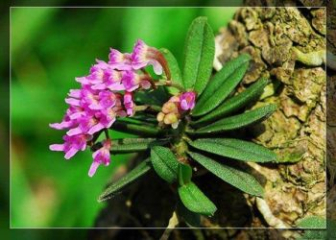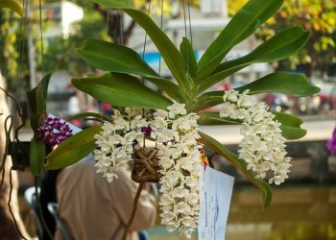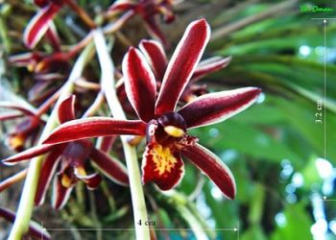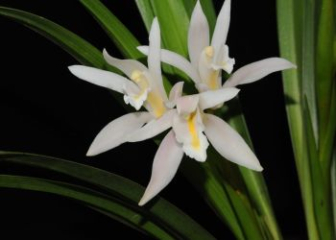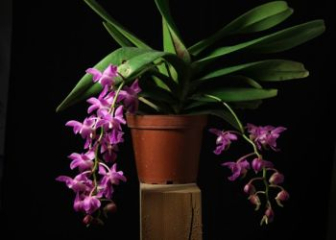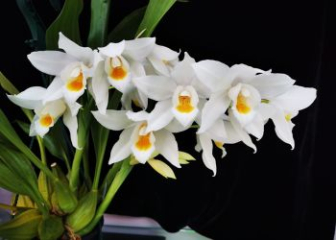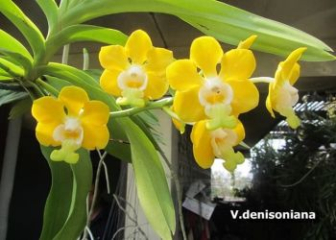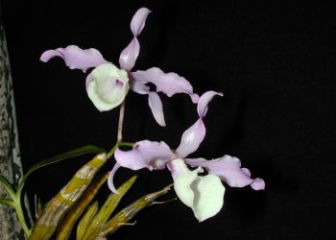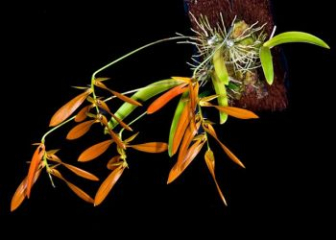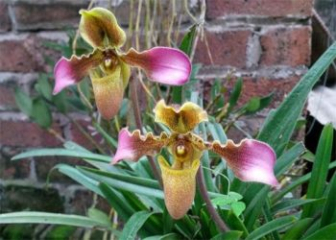Orange Dendrobium - Wild orchid with bright orange color
Blog | by
The single orange orchid is a rare wild orchid species with bright orange flowers, unique shape, characteristic fragrance, difficult to propagate, and has high collection value.
Orange Dendrobium (scientific name: Dendrobium unicum) is one of the rare native wild orchids of Southeast Asia, standing out with its brilliant orange flowers and unique, eye-catching structure. This orchid not only attracts players by its impressive beauty but also has a gentle scent and high collection value because it is quite difficult to propagate.
In today's article, let's learn about the origin, characteristics, and detailed techniques for growing and grafting the Orange Dendrobium orchid to help you confidently try this unique, colorful orchid.
Origin of Orange Single Dendrobium Orchid

The single orange Dendrobium orchids bloom in fiery orange.
The single orange orchid has the scientific name Dendrobium unicum, belongs to the genus Dendrobium, is a native orchid species of Southeast Asia, commonly distributed in the following countries:
- Vietnam: Son La, Lai Chau, Lao Cai, Kon Tum, Gia Lai, Dak Lak
- Thailand, Laos, Cambodia,...
In nature, the single orange Dendrobium is an epiphyte, often growing on large tree trunks in semi-deciduous forests or mixed forests, where there is scattered light, at an altitude of 800 - 1600 m above sea level.
In Vietnam, the single orange Dendrobium orchid is overexploited, so its number in the wild is seriously decreasing. Currently, this orchid species is mainly propagated and domesticated from orchid gardens.
In the orchid collector community, Dendrobium single orange is highly valued because of its unique shape, solitary flowers, and difficulty in propagating by tissue culture or seed.
Orange Dendrobium Orchid - A colorful orchid

Images of flowers, stems, leaves and roots of the single orange orchid.
The single orange orchid is a rare wild orchid because of its bright orange flowers and unique shape. Let's find out more details below.
Close :
- Slender, long, cylindrical, not bulging stem, small stem Dendrobium orchid group
- Length from 10 - 15 cm, diameter from 0.3 - 0.5 cm
- Divided into many short segments, the stem grows upright or slightly curved.
- Usually yellowish green or yellowish brown when old
Leaves :
- Thin leaves, pointed lanceolate, 5 - 6 cm long, 0.7 - 1 cm wide
- Leaves grow alternately along the stem, each stem only grows 2 - 5 leaves.
- Leaves are light green, not shiny
Flower :
- The flowers grow singly from the buds on old stems, near the top, and are bright orange - hence the name “single orange”.
- Each stem usually has 1 - 3 flowers with a diameter of 4 - 5 cm.
- The petals are slender, soft, slightly twisted and look very special.
- The flower lip is wide, tubular, deeply lobed, the flower throat is dark orange or orange-yellow, with prominent veins, creating a beautiful contrast with the bright orange and red-orange tones of the petals.
- The flowers have a light fragrance, like the smell of children's crayons.
- Flowers bloom in spring - early summer (February - May of the solar calendar)
Detailed techniques for planting and caring for single orange Dendrobium orchids for beginners
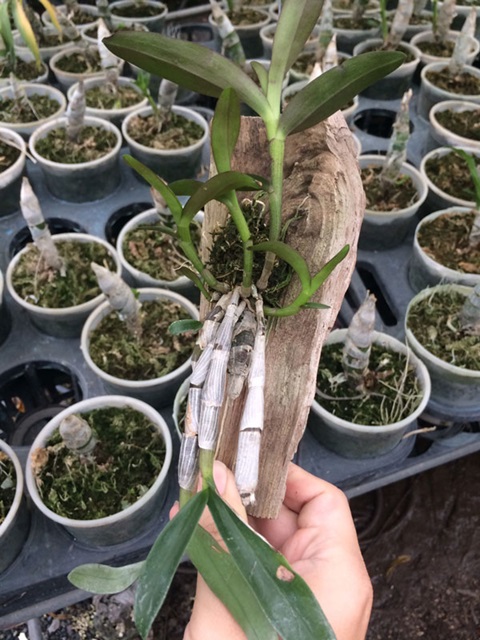
Detailed technique for growing single orange orchid.
The single orange orchid is famous for being a difficult orchid to grow, difficult to please and requires a lot of techniques. However, do not worry, because below we have compiled the most detailed experiences, techniques for growing & caring for this orchid to help you succeed and own the most brilliant orange orchid pots.
Select seeds, choose growing medium and process before planting
Before planting and grafting the single orange orchid, you need to prepare well the steps of selecting the breed, choosing the substrate and handling hygiene and fungus. Please note the following.
Criteria for choosing good orange orchid varieties :
- Choose kie that has roots, green leaves, and unbruised stems.
- If choosing a tree stripped from the forest, choose a fresh trunk with clear buds.
- Do not choose plants with shrunken, mushy stems or signs of fungal disease.
Seed treatment :
- Trim away deep roots, diseased roots, old leaves, and clean the roots.
- Soak the plant in a diluted solution of Physan 20, B1 for 15 - 20 minutes to both kill fungus and stimulate roots.
- Leave the orchid roots in a dry place for 1-2 days before planting.
Select and process the substrate:
- Suitable substrate for orange orchid Driftwood, pine bark, honeycomb charcoal, coconut fiber board, terracotta pot, good drainage plastic pot
- The growing media needs to be soaked in lime water and thoroughly treated for fungus and disease before planting to limit the spread of pathogens.
Watering & maintaining ideal humidity
Watering orchids seems simple but actually requires high technique because otherwise it will easily cause the orchid to be waterlogged, rotten roots. Please follow the instructions below.
-
After grafting (first 2 weeks): Spray light mist early in the morning, do not water the base strongly.
-
Dry season: Water twice a day
-
Rainy season: Limit watering, only water when the growing medium is dry.
-
Resting season (November - January): Stop watering for 3 - 4 weeks, only spray lightly when the orchid is too dry.
Fertilizing single orange orchids in each stage
Depending on each stage of development, you need to fertilize the single orange orchid with different types of fertilizer so that they can grow best, bloom beautifully and brightly.
- Germination stage: Spray diluted fertilizer such as NPK 30-10-10 + B1. organic fertilizer
- Pre-flowering stage: Limit high nitrogen fertilizer, switch to NPK 6-30-30, cut water
- Flowering stage: Switch to NPK 15-5-30 to help flowers have bright colors and stay fresh longer.
- Suggestion: You can use organic fertilizers such as earthworms, slow-release fish fertilizer, spread evenly over the pot and water slowly.
Proactive disease prevention for single orange orchid
To help the orange orchid to be less susceptible to disease and to be proactive in treatment, you should proactively prevent disease according to the following suggestions:
- Keep the environment airy and clean regularly
- Observe the condition of the plant every day to detect any unusual signs early.
- When you see the plant has root rot, leaf spots, yellow leaves, you need to remove damaged leaves and rotten roots to prevent spreading, spray diluted Ridomil Gold to kill fungus.
- In addition to biological drugs, you can apply some folk methods such as using GE ginger garlic chili to prevent diseases for orchids.
Advice for orchid beginners
Here are some sincere tips for those who are new to growing single orange orchids. Please refer to them to gain experience for yourself.
- You must be patient and not impatient and orange orchids grow quite slowly, they need at least 1 year after acclimatization to start to stabilize and bloom beautifully, on time.
- The key to your success with orange orchids is to “Follow the correct biological cycle”.
- Orchids should be grown on wood or driftwood rather than in pots.
- Do not water too much.
Price list of single orange orchids
Currently, the single orange Dendrobium orchid is sold in the Vietnamese market at many different prices, depending on the origin, condition as well as the size of the pot. If you want to learn more details, please refer to the following price list.
|
Single Orange Orchid |
Specifications |
Reference price (VND) |
|
Wild orange single orchid |
Sold by kg, fresh stem, newly harvested from the forest |
250,000 - 400,000 VND/kg |
|
Kie single orange orchid (small seedling) |
Small seedlings, 5 - 15 cm, with roots |
30,000 - 80,000 VND/tree |
|
Pure potted orange orchid |
The plant is domesticated, has 3 - 6 stems, ready to flower. |
300,000 - 700,000 VND/tree |
|
Beautiful orange single orchid, in bud |
4 - 7 stems, beautiful grafted pot, with buds and flowers available |
500,000 - 1,000,000 VND/roll |
Note :
- Forest varieties are often cheap but require a lot of experience and time to care for.
- Purebred lines will cost more but are easier to care for and flower quickly.
- You should buy orchids from reputable gardens and sellers to ensure the origin and quality of the plants.
Questions and answers about single orange orchid?
Is the orange single orchid fragrant?
Yes, the Orange Dendrobium has a distinctive scent, similar to the smell of children's crayons.
Is the single orange orchid easy to grow?
No, in fact this is one of the quite difficult wild orchid species to grow, requiring you to have a lot of knowledge and experience about orchids.
When does the single orange orchid usually bloom?
Orange Dendrobium usually blooms in spring - early summer (February - May) if properly cared for.
Why does the single orange orchid not bloom?
There are many reasons why the single orange orchid does not flower, such as the plant is still small, weak, not strong enough, or the plant does not have a dormant season, too much nitrogen fertilization causes the plant to develop new shoots instead of flowers,...
The most brilliant single orange orchid image
We invite you to admire some more images of the single orange Dendrobium orchid with the most brilliant colors that we have collected below to see why this orchid leaves such a deep impression.
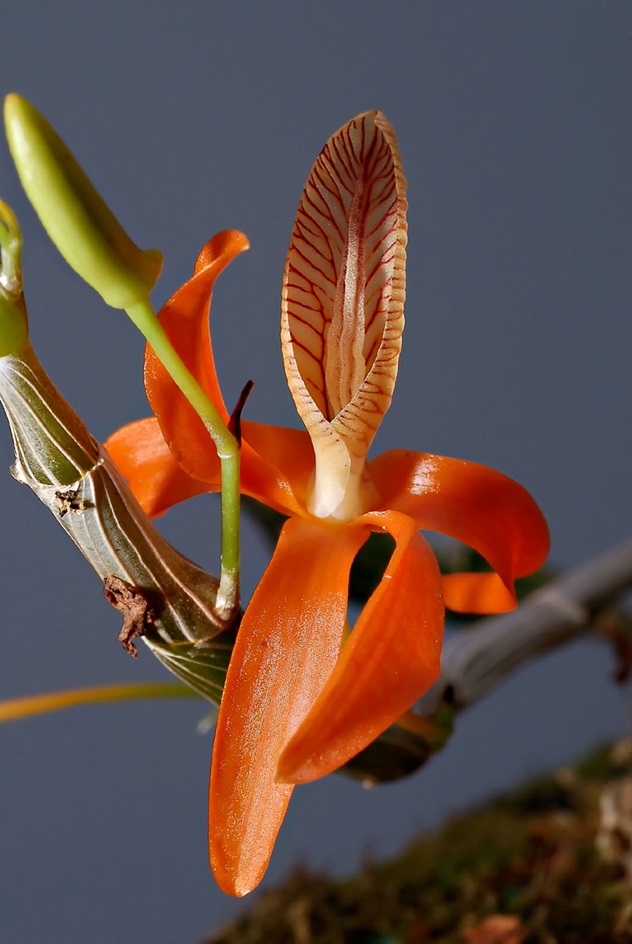
Close-up of the single orange Dendrobium orchid with its vibrant orange color.
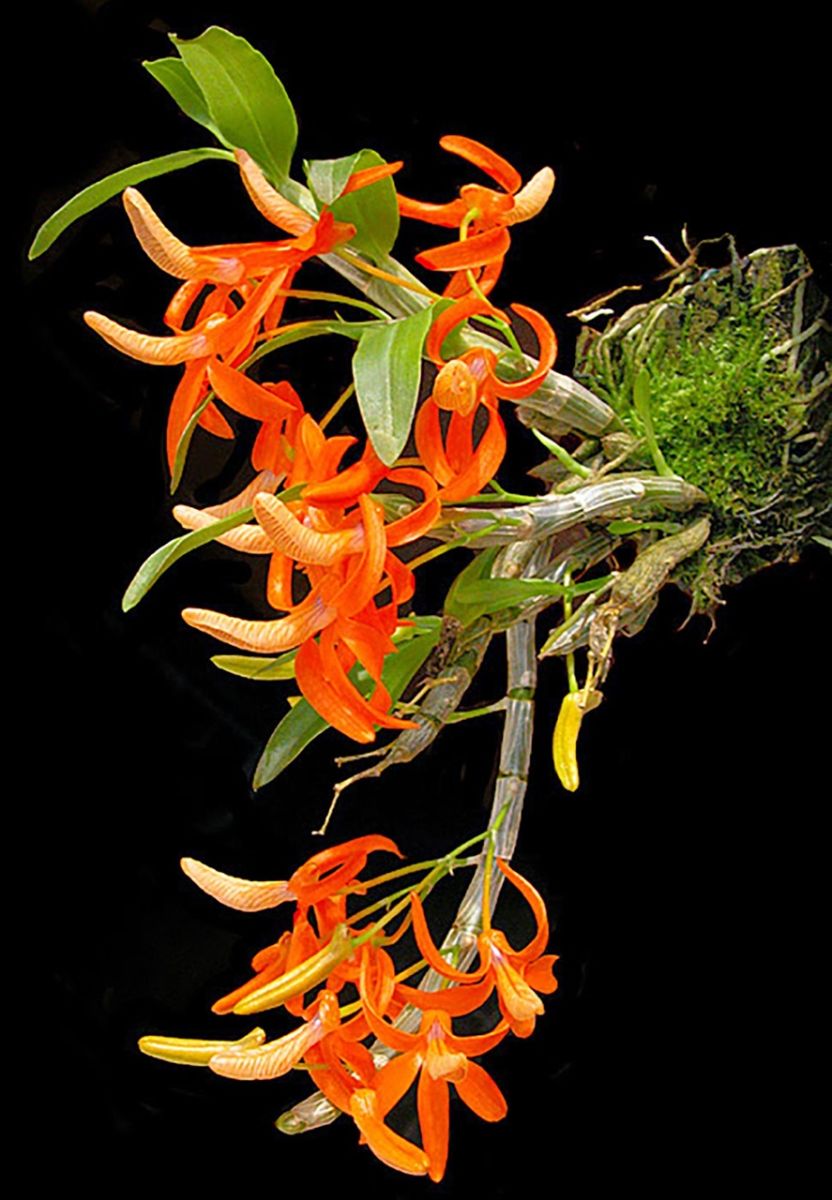
The orange Dendrobium flowers have a luxurious and charming beauty.
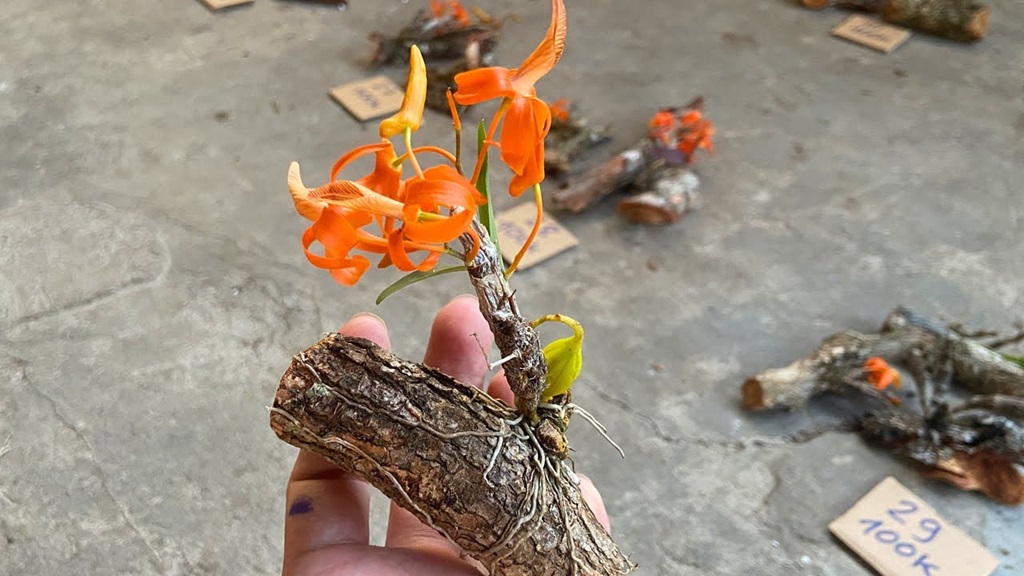
A small, pretty branch of wild orange orchid.
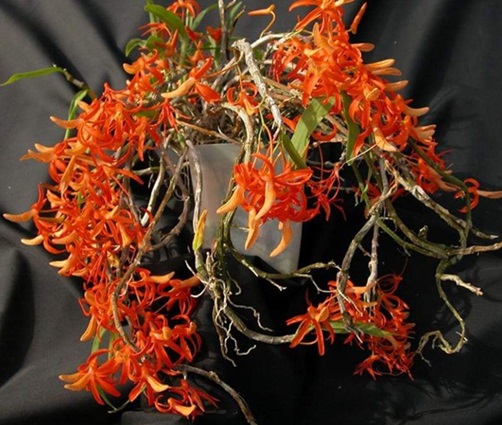
A single orange Dendrobium orchid in full bloom.
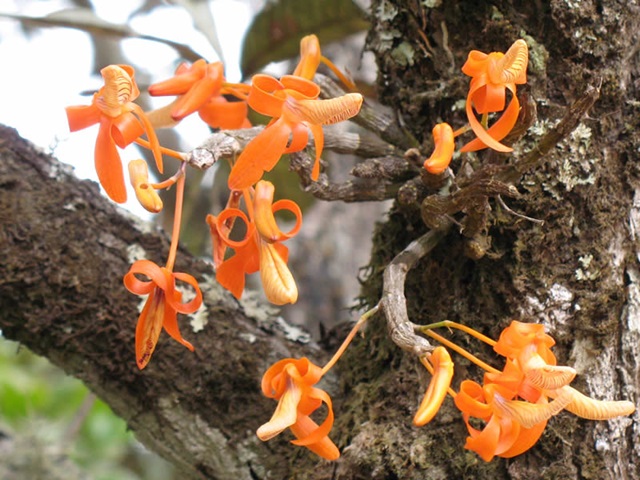
Orange Dendrobium orchid lives on tree trunks.
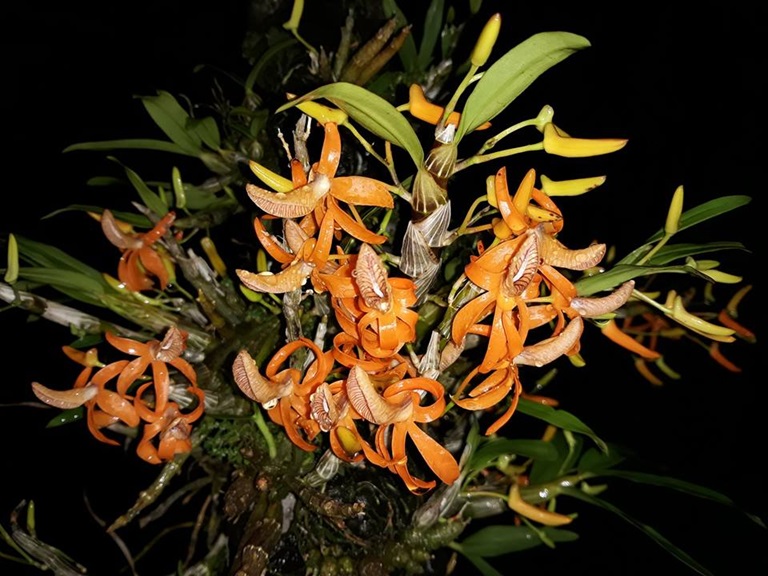
A pure wild orange single orchid is blooming beautifully.
With its bright orange color, unique flower shape and special scent, the single orange Dendrobium orchid deserves to be ranked among the most beautiful and rare wild orchids that orchid lovers must own.
Although this orchid species is somewhat difficult to domesticate and requires more rigorous care techniques than other normal wild orchids, in return you will own orchid pots with super colorful colors and beautiful shapes that make everyone admire, it is very worthy, right?
If you want to discover more interesting things as well as experiences in planting & caring for beautiful wild orchids, please visit the Blog section of orchid-vn.com regularly so as not to miss any useful articles.
